Morgan G. Bulkeley Stadium
- Former names: Wethersfield Avenue Grounds (Hartford Baseball Park) from 1901-1921. Clarkin Field (Clarkin Stadium) from 1921-1927.
- Location: Hanmer Street & George Street, off of Franklin Avenue in Hartford, Connecticut.
- Capacity: 12,500
- Opened: 1928
- Demolished: 1955
- Tenants: Hartford Baseball Club (1902-1932, 1934, 1938-1945), Hartford Blues Football Club (1925-1927), Savitt Gems (1932-1945) and Hartford Chiefs (1946-1952).

Morgan G. Bulkeley Stadium was a celebrated sports venue in Hartford, Connecticut, best known as the site of Babe Ruth’s final appearance. The stadium set the stage for countless minor league matchups and a diverse array of sporting events, allowing Hartford to host major league icons and rising amateur talents from around the world. Originally built in 1921 as Clarkin Field, it was renamed in 1928 to honor Morgan Gardner Bulkeley, former Connecticut Governor, United States Senator and first President of the National League.

The stadium was the primary home of the Hartford Baseball Club, a minor league club known by several different names over the years: Senators, Bees, Laurels, and eventually, Chiefs. Semi-professional teams like the Savitt Gems and the Hartford Indians attracted fans to the ballpark in the 1930s and 1940s. During off seasons, the facility featured the Hartford Blues of the National Football League, nationally sanctioned boxing matches, motor sports and artistic performances.
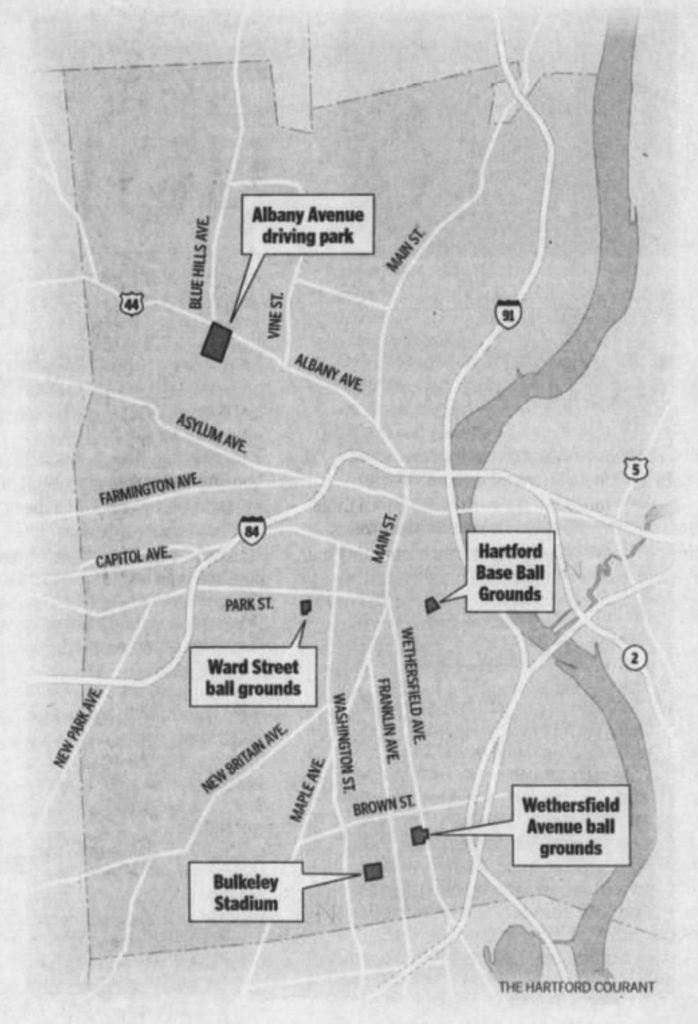
The story of Bulkeley Stadium originates a block to the east at Wethersfield Avenue Grounds, also referred to as Hartford Baseball Park or the Hartford Grounds. The diamond was built in March of 1896, by Hartford Baseball Club owner and manager, William Barnie. Then in 1905, James H. Clarkin purchased the team and leased Wethersfield Avenue Grounds. At that time, the Hartford Courant praised the playing surface as “the finest in this section of the country.”

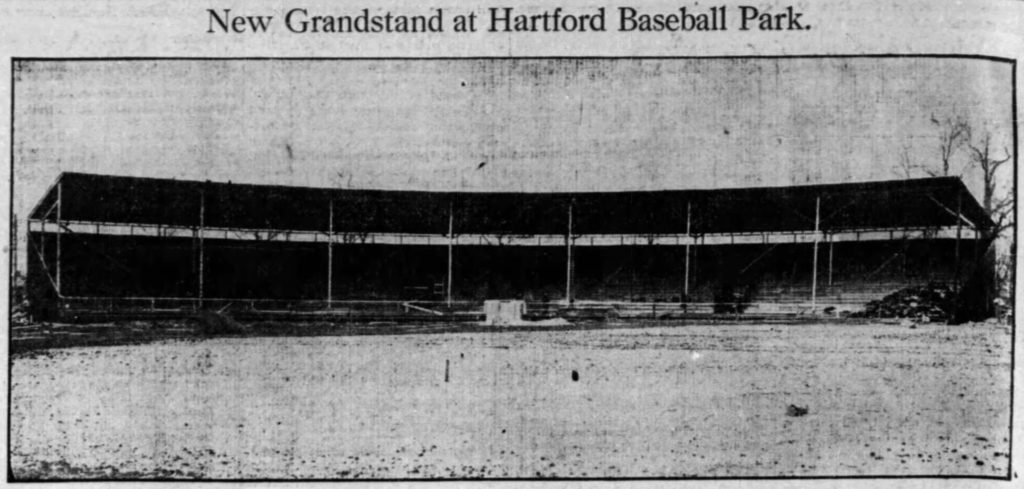
After a few renovations to Wethersfield Avenue Grounds, owner Clarkin financed a new stadium a stone’s throw away. The new site was located at the intersection of Hanmer Street and George Street off of Franklin Avenue in South Hartford. Clarkin’s grandstand, made of steel and concrete, wrapped around the field from foul pole to foul pole. Locker rooms below the stands were equipped with showers, baths, and telephones. The park opened in 1921, dubbed Clarkin Field (also called Clarkin Stadium).


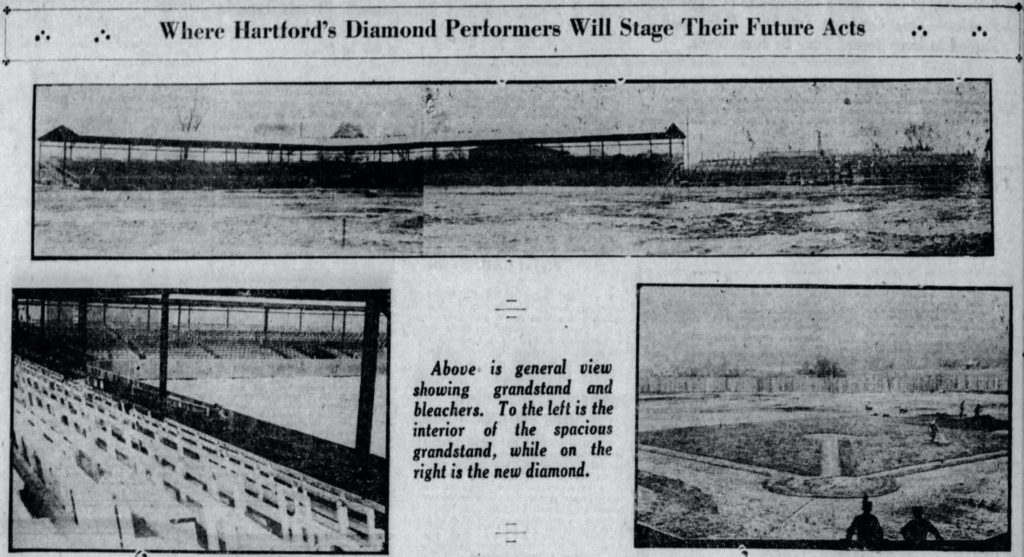


Clarkin’s field gained a reputation as one of New England’s top ballparks that drew world class players. The stadium played a significant role in Lou Gehrig’s early professional career with Hartford in 1921, 1923, and 1924. To skirt collegiate eligibility rules, Gehrig played under the guise of a pseudonym, Lou Lewis, before leading the Senators to the 1923 Eastern League pennant. Clarkin Field also hosted Jim Thorpe, the renowned Native American Olympian and football star, when he briefly joined the Senators during his final professional season. Other Hartford players in the 1920s included Leo Durocher, Jo-Jo Morrissey, Kiddo Davis and Pete Appleton.
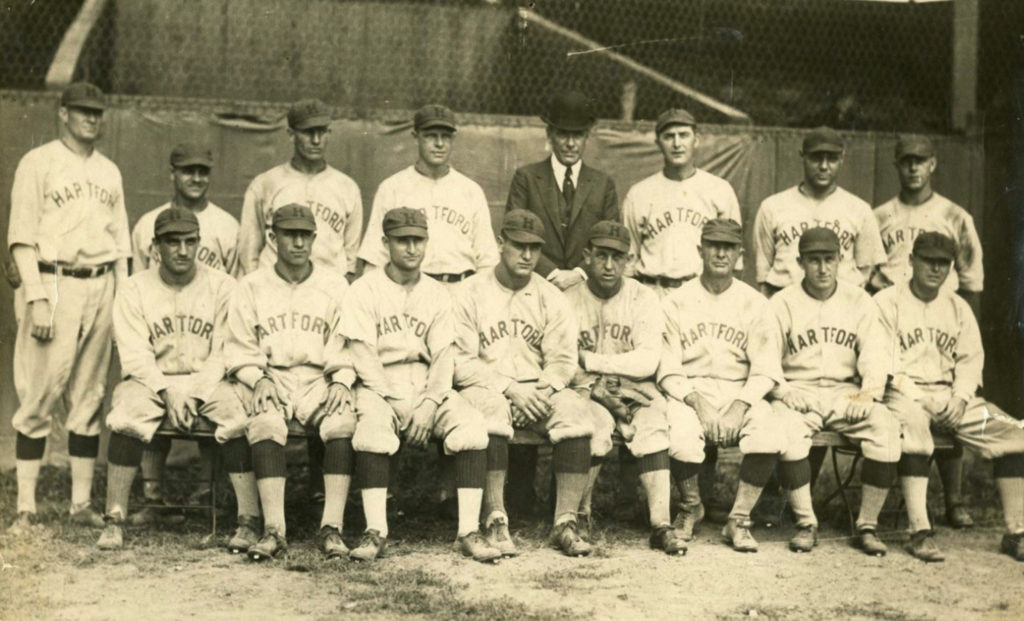

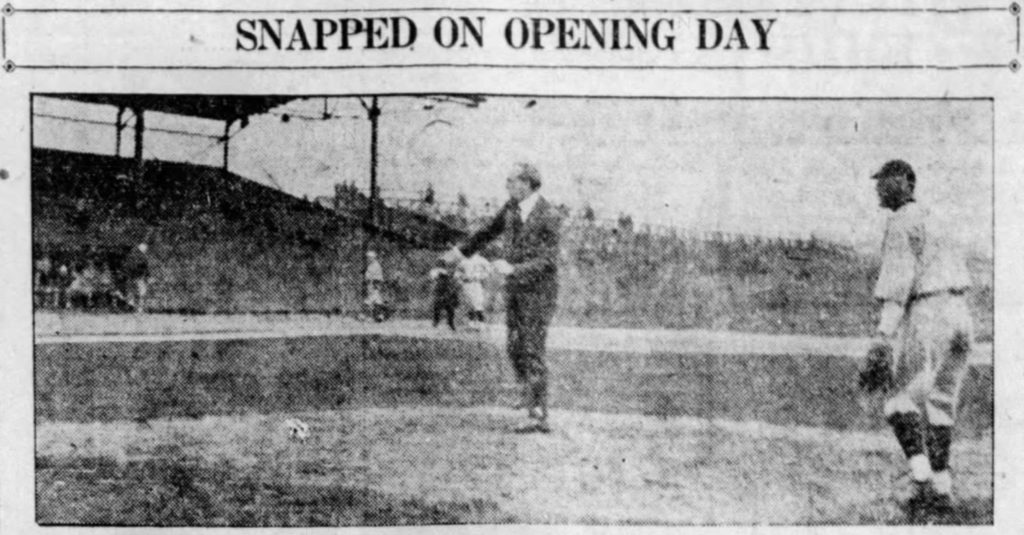

In 1927, an accidental fire severely damaged the grandstand at Clarkin Field. The stadium was rebuilt two months later while the Hartford Senators played all of their games on the road until mid-July. Perhaps because of losses incurred by the fire, Clarkin decided to retire from baseball. He sold the team and Clarkin Field and the Senators in 1928 for over $200,000 to a group of local investors.


The new owners were spearheaded by Robert J. Farrell, a real estate and insurance agent who had been the team’s business manager. Under Farrell’s stewardship, Hartford remained a contender in the Eastern League. Ahead of the 1928 season, Clarkin Field was renamed Bulkeley Stadium to honor Morgan G. Bulkeley, the prominent political figure who had died six years earlier. The venue saw several upgrades, including the addition of steel seating. Though Farrell’s tenure as president was cut tragically short when he unexpectedly passed in 1930, at the age of 32, due to acute appendicitis.





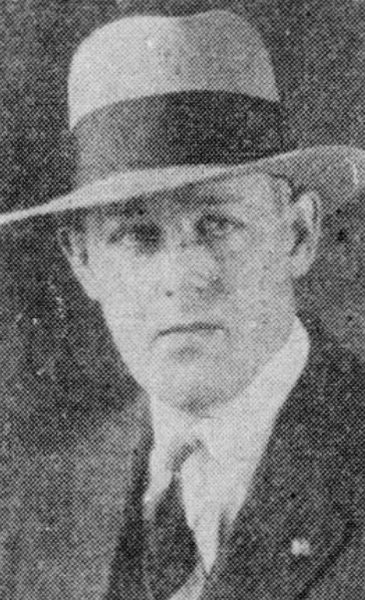
In 1930, future Hall of Fame inductee Hank Greenberg suited up for the Senators at Bulkeley Stadium, and King Bader served as manager. Amid the Great Depression, the club was sold once more – this time to the Brooklyn Dodgers organization, marking Hartford’s entry into affiliated baseball. The team thrived in 1931, clinching the Eastern League championship with standout performances from Red Howell, Al Cohen and Bobby Reis. However, when the Eastern League folded midway through the 1932 season, Bulkeley Stadium lost its marquee baseball team.


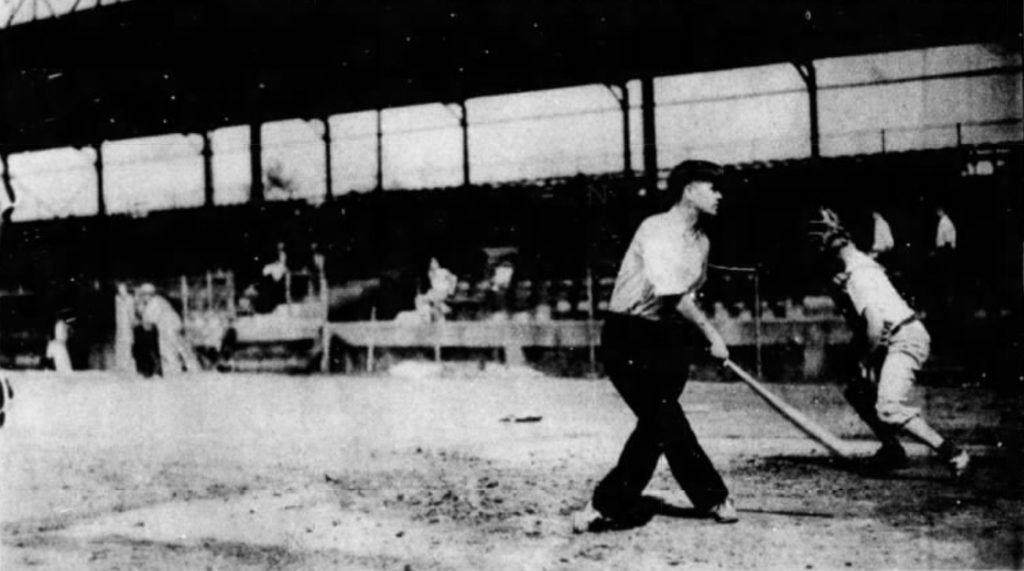

The void at Bulkeley Stadium was filled in July of 1932 by the Savitt Gems, a semi-pro team from the Hartford Twilight League. The Gems were sponsored by Bill Savitt, a well-known jeweler and sports promoter. With Bulkeley Stadium as their home, the Gems became one of America’s most celebrated semi-pro teams. Between 1932 and 1945, Savitt and his Gems brought an impressive lineup of legends to Hartford: Babe Ruth, Cy Young, Ted Williams, Honus Wagner, Lloyd Waner, Dizzy Dean, Jimmie Foxx, Jim Thorpe, Chief Bender, Josh Gibson, Martin Dihigo, Satchel Paige, Johnny Taylor, Johnny Mize, Bill McKechnie, Moose Swaney and Monk Dubiel.



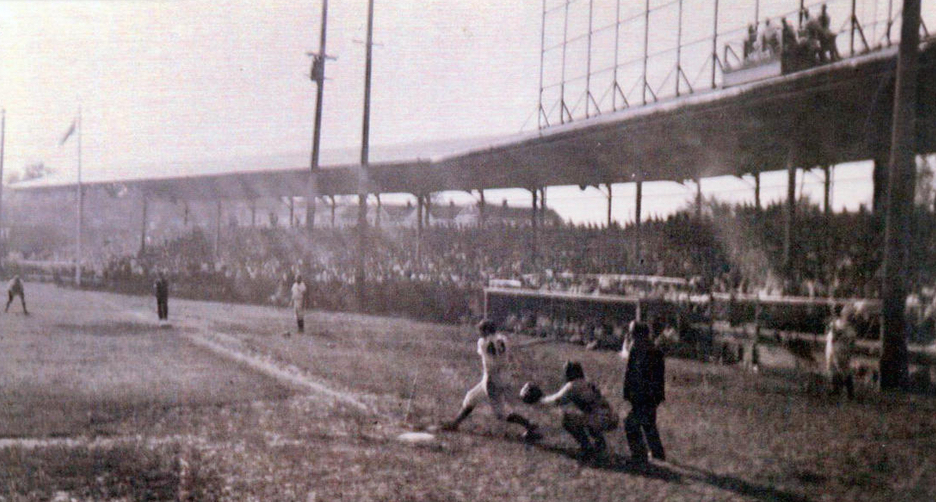






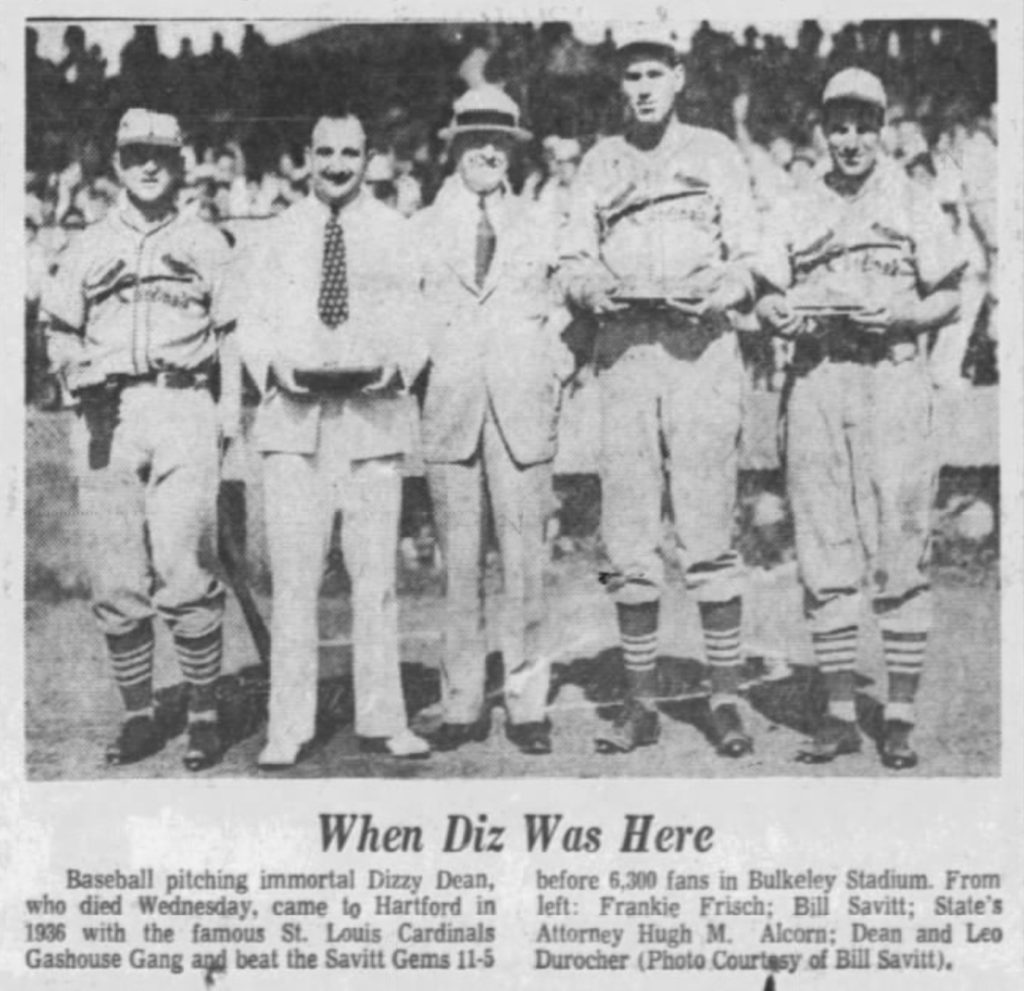

In 1938, the Boston Bees of the National League brought minor league ball back to Hartford. They purchased the Senators, leased Bulkeley Stadium and appointed General Manager Charles Blossfield to oversee. The team was referred to as the Hartford Senators, Hartford Bees and Hartford Laurels. During the 1942 season, Del Bissonette served as player-manager while eventual Hall of Fame pitcher, Warren Spahn earned 17 wins and 12 losses. Then, due to brilliant pitching by Hal Schacker and Pete Naktenis, a former Savitt Gems ace, Hartford raised the 1944 Eastern League pennant at Bulkeley Stadium.

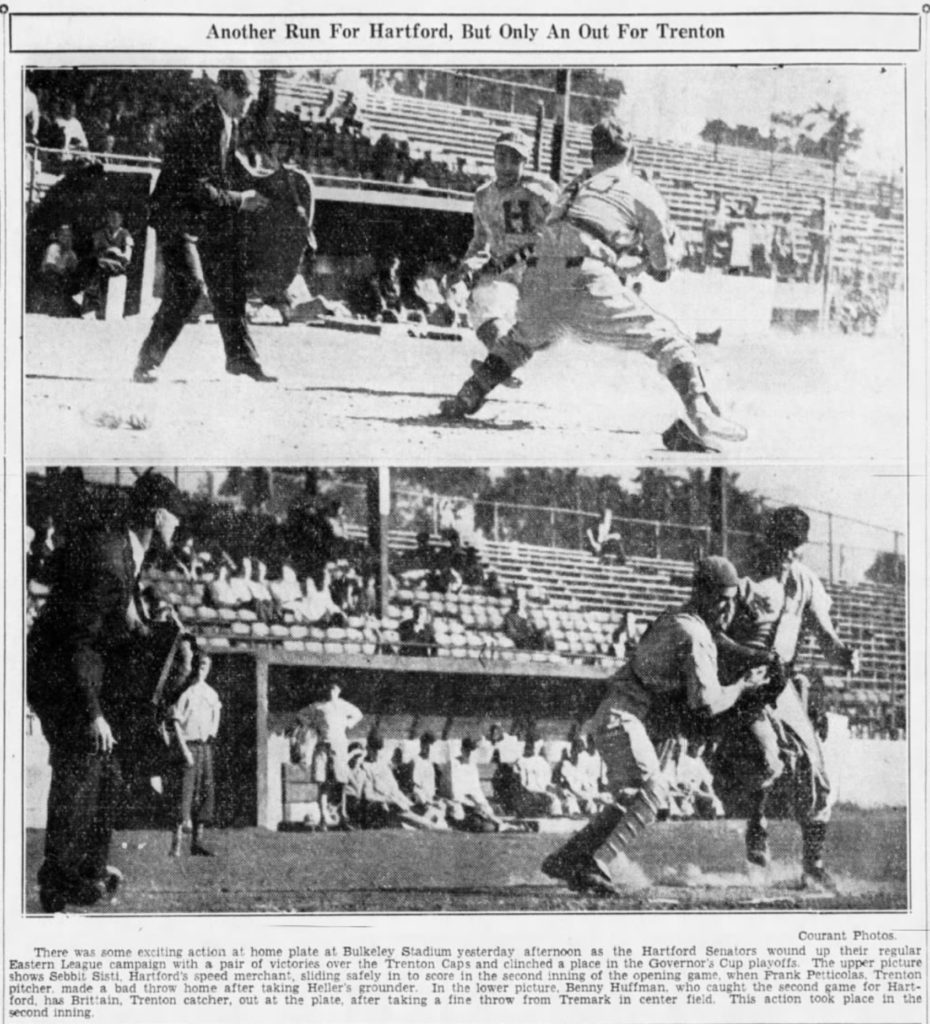

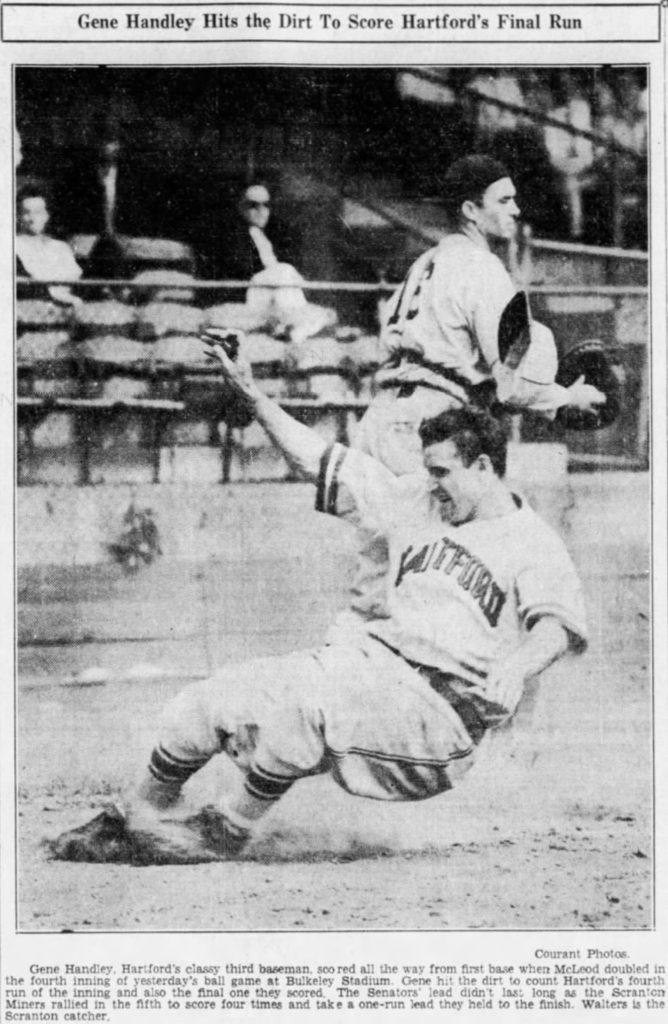
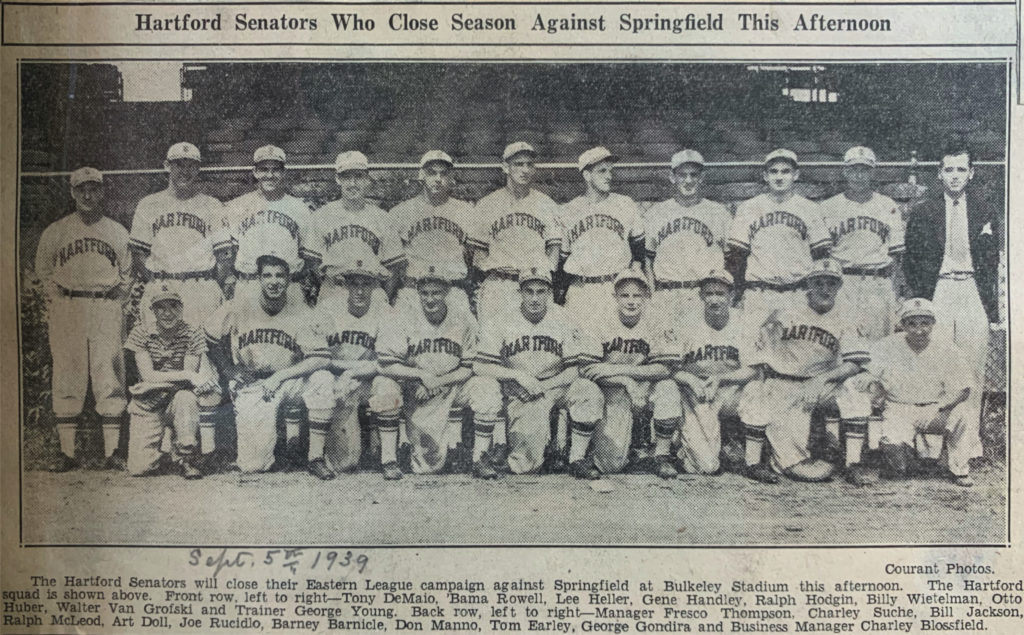

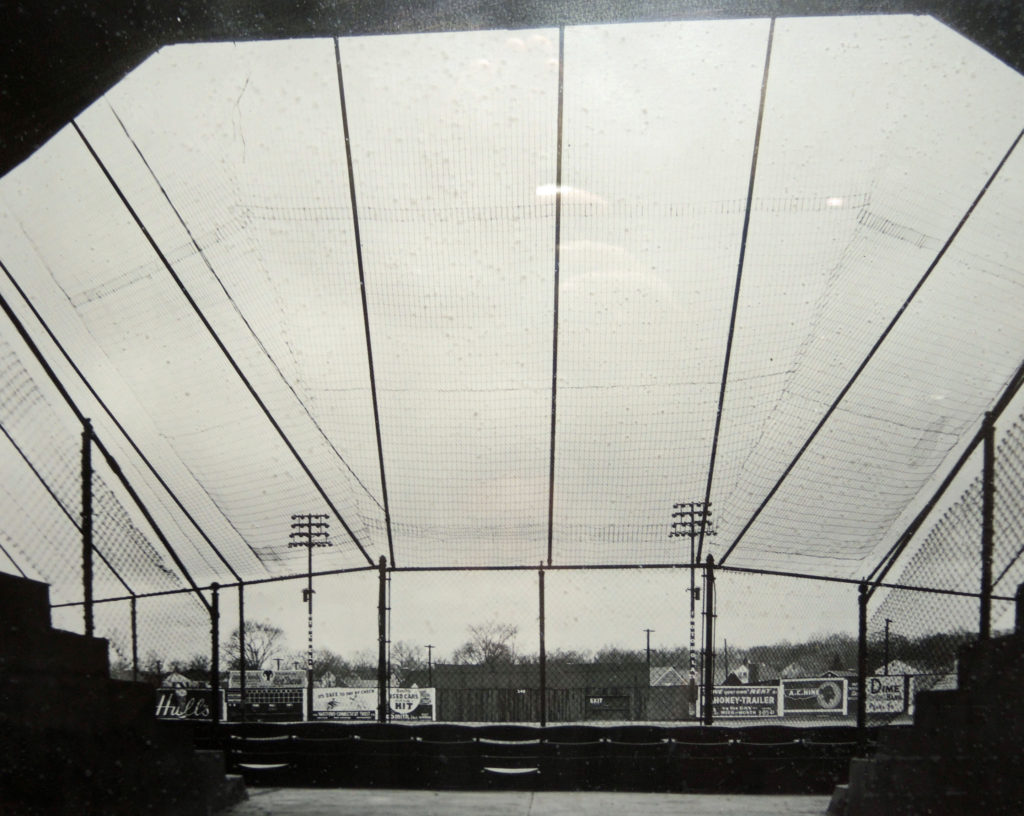



On September 29, 1942, a day after finishing the season with a win over the Yankees, Ted Williams traveled to Hartford to play for the Savitt Gems at Bulkeley Stadium. The Gems faced the New Britain Cremos, featuring Brooklyn Dodgers pitcher Hugh Casey and catcher Mickey Owen. Williams wowed a crowd of 2,500 during batting practice. The game was a pitchers’ duel, with Hartford native Monk Dubiel and Casey holding both teams scoreless through five innings. The Gems broke through with a run in the sixth, but the real fireworks came in the seventh when Williams launched a towering home run off Casey, sealing a 2-1 victory for the Gems.
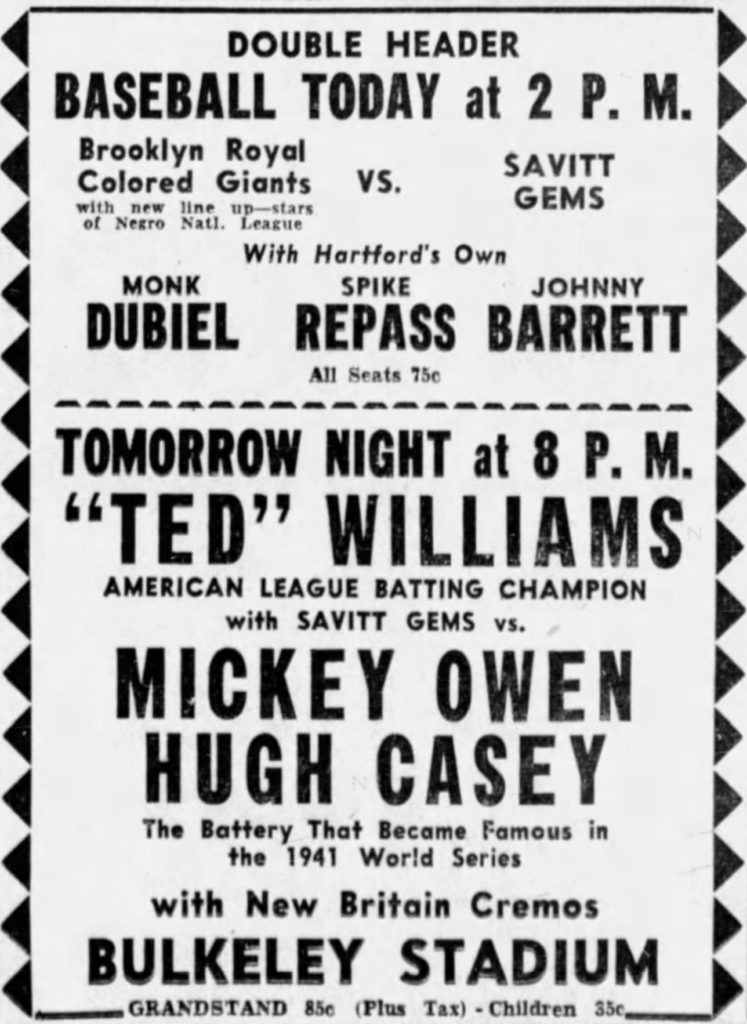
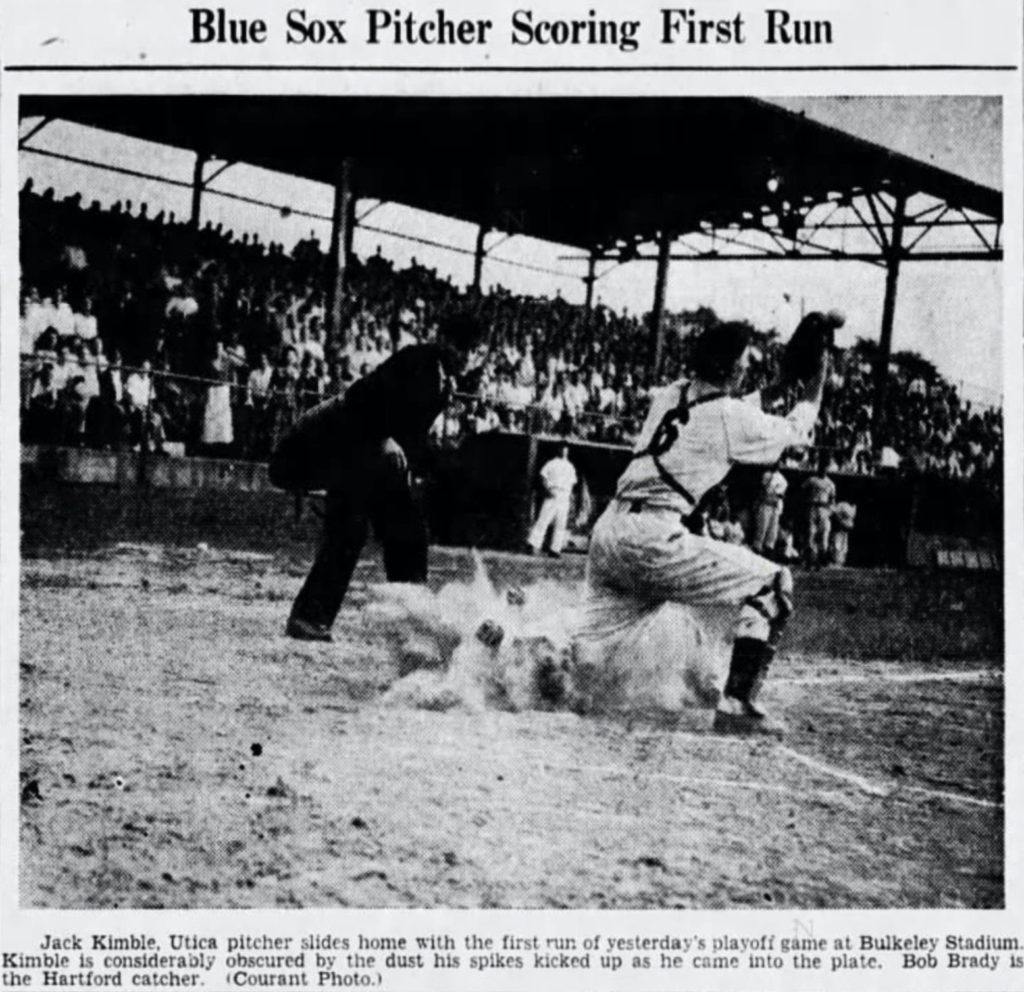
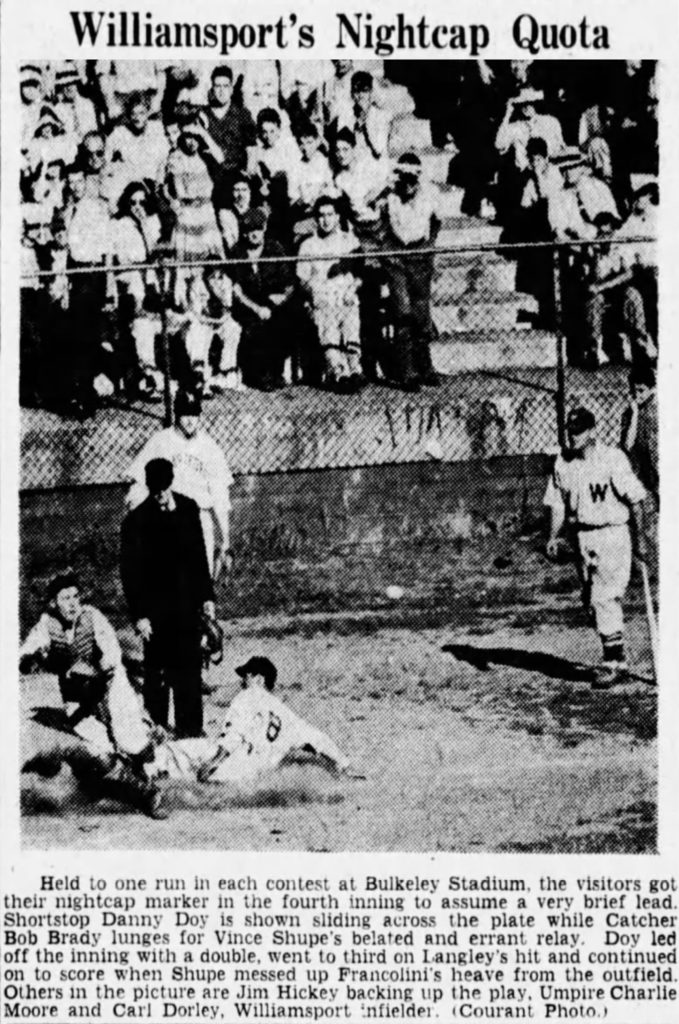
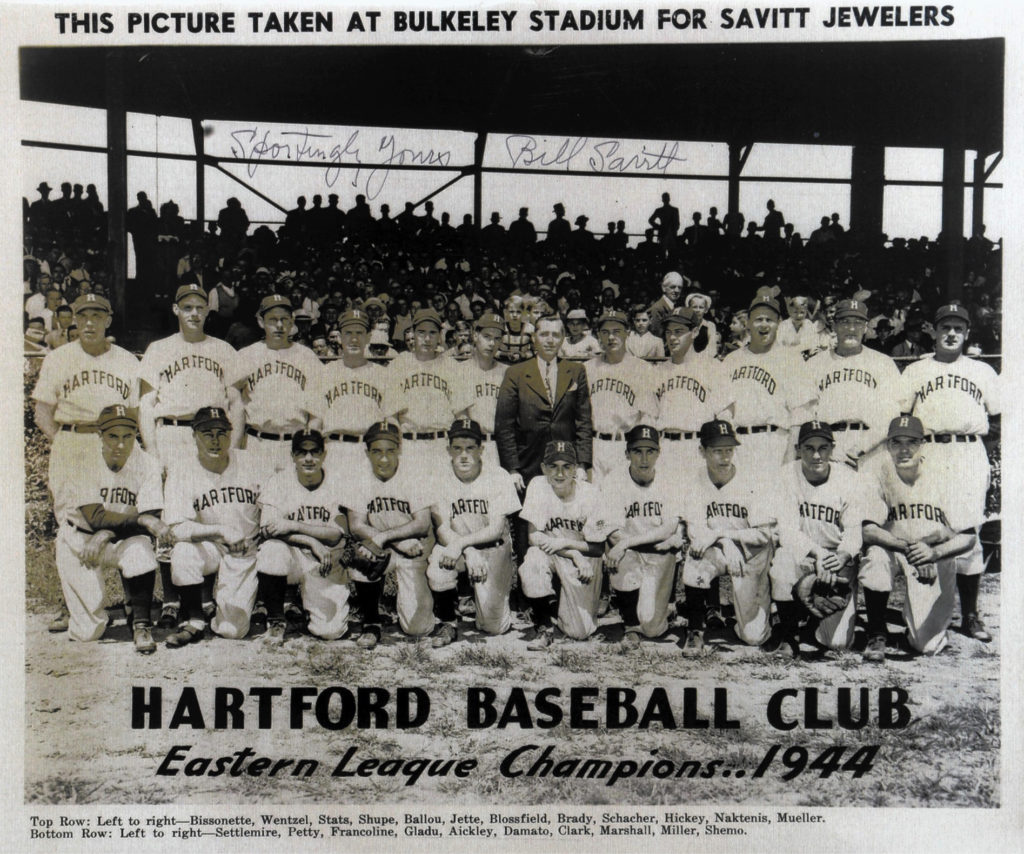
On September 30, 1945, Babe Ruth came to Hartford to play in a charity game at Bulkeley Stadium as a member of the Savitt Gems. At 50 years old, Ruth took batting practice before the game and clouted a home run over the right field fence. He coached first base during the exhibtion and later entered as a pinch-hitter, grounding out to the pitcher. It was Ruth’s final appearance in a game, and he passed away less than three years later.

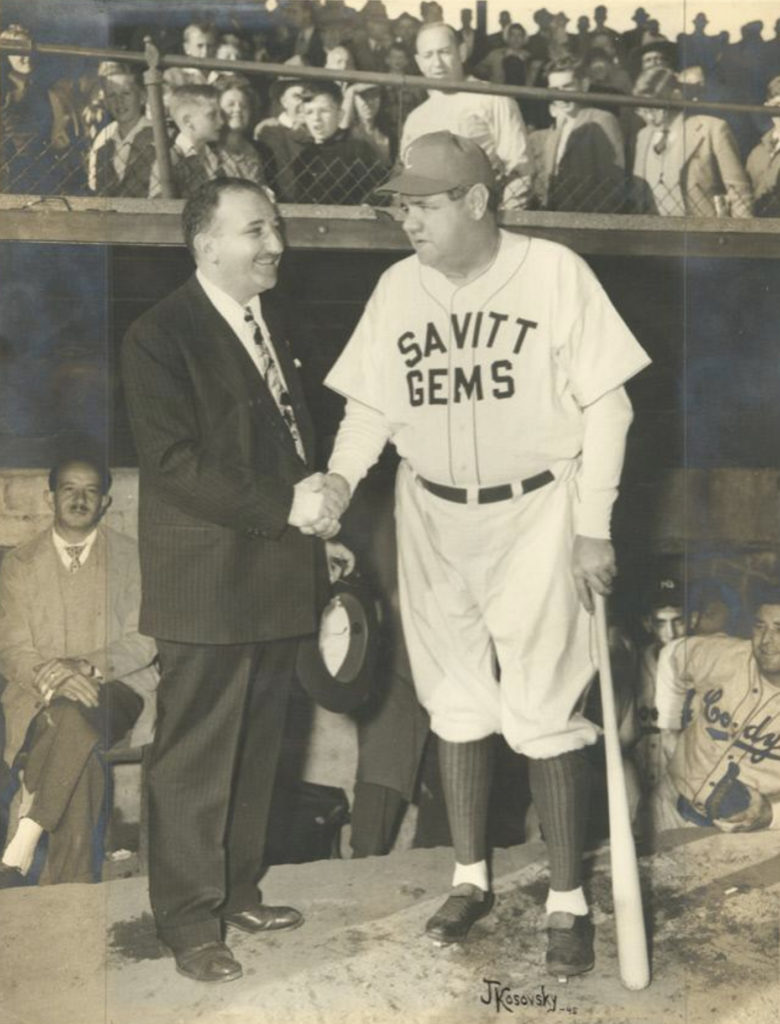

In 1946, Hartford’s minor league team changed its name to the Chiefs after their major league affiliate reverted to the Boston Braves. Standout players for the Chiefs at Bulkeley Stadium included Gene Conley, George Crowe, Frank Torre, and Wethersfield native Bob Repass. The team competed in the Eastern League and remained a Braves affiliate for several years. After the Boston Braves moved to Milwaukee following the 1952 season, the Hartford Chiefs also relocated, marking the end professional baseball in city until the Hartford Yard Goats arrived in 2016.
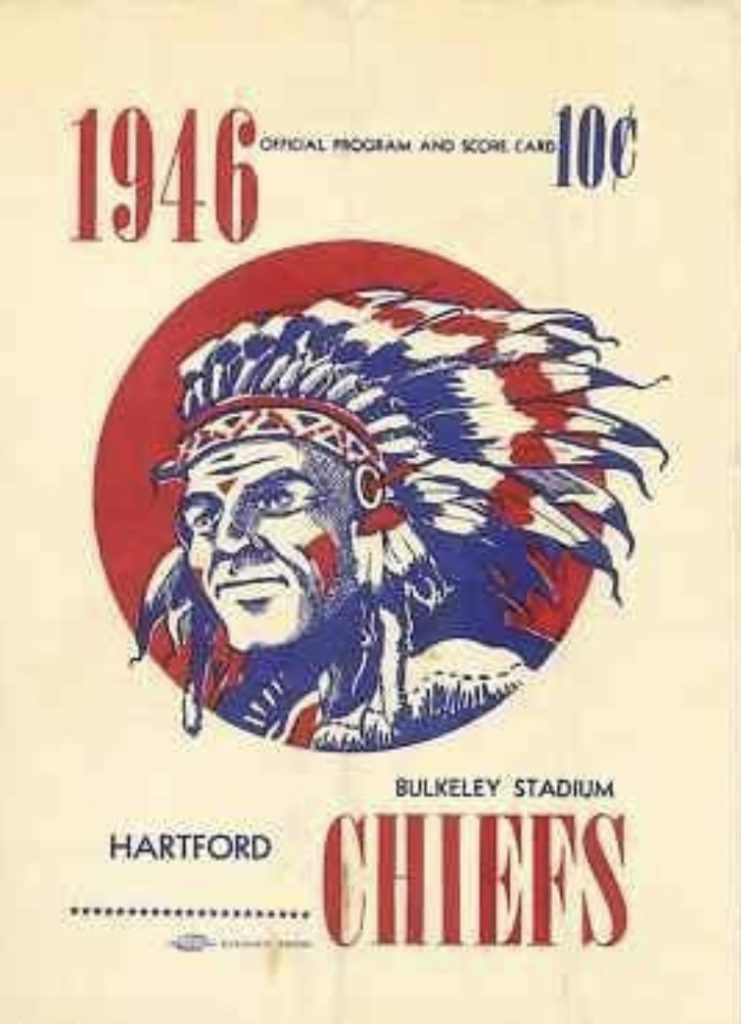
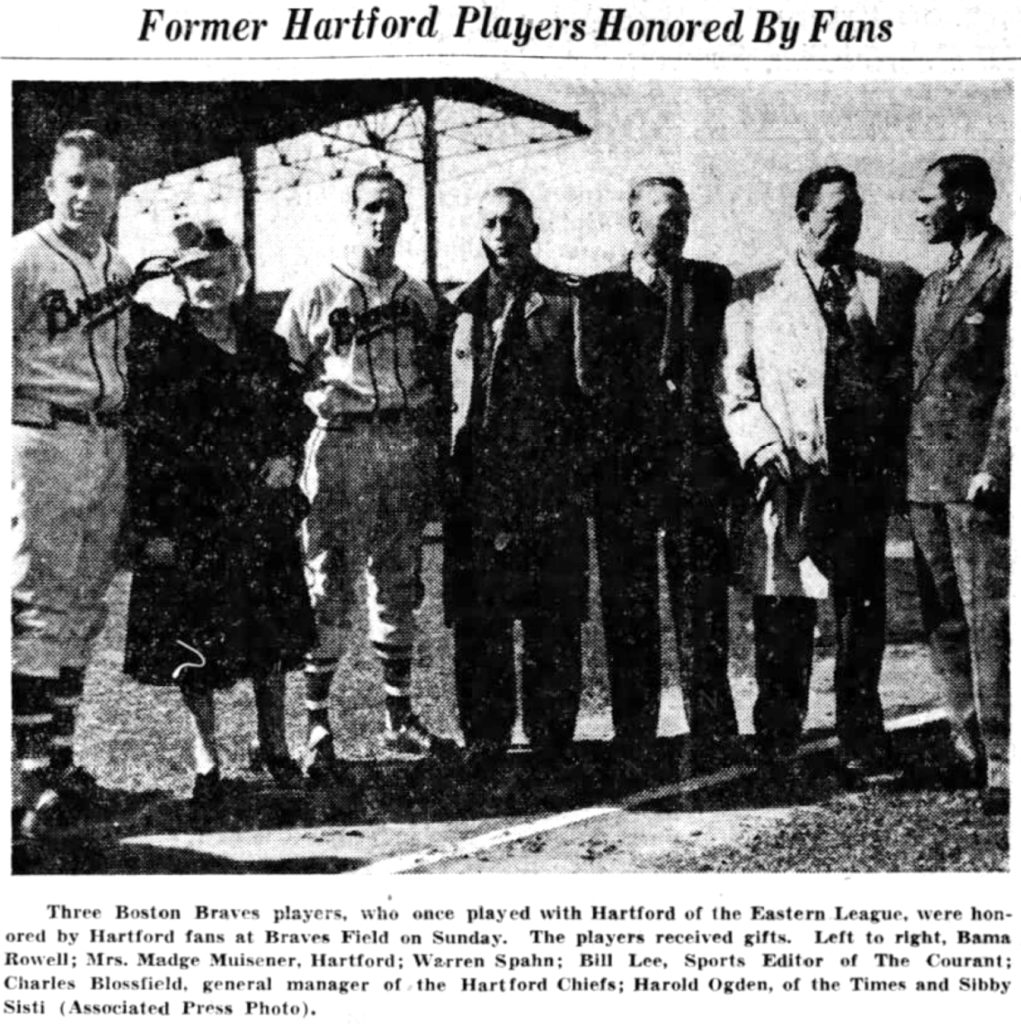
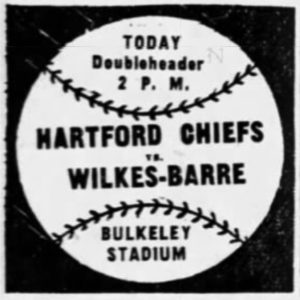

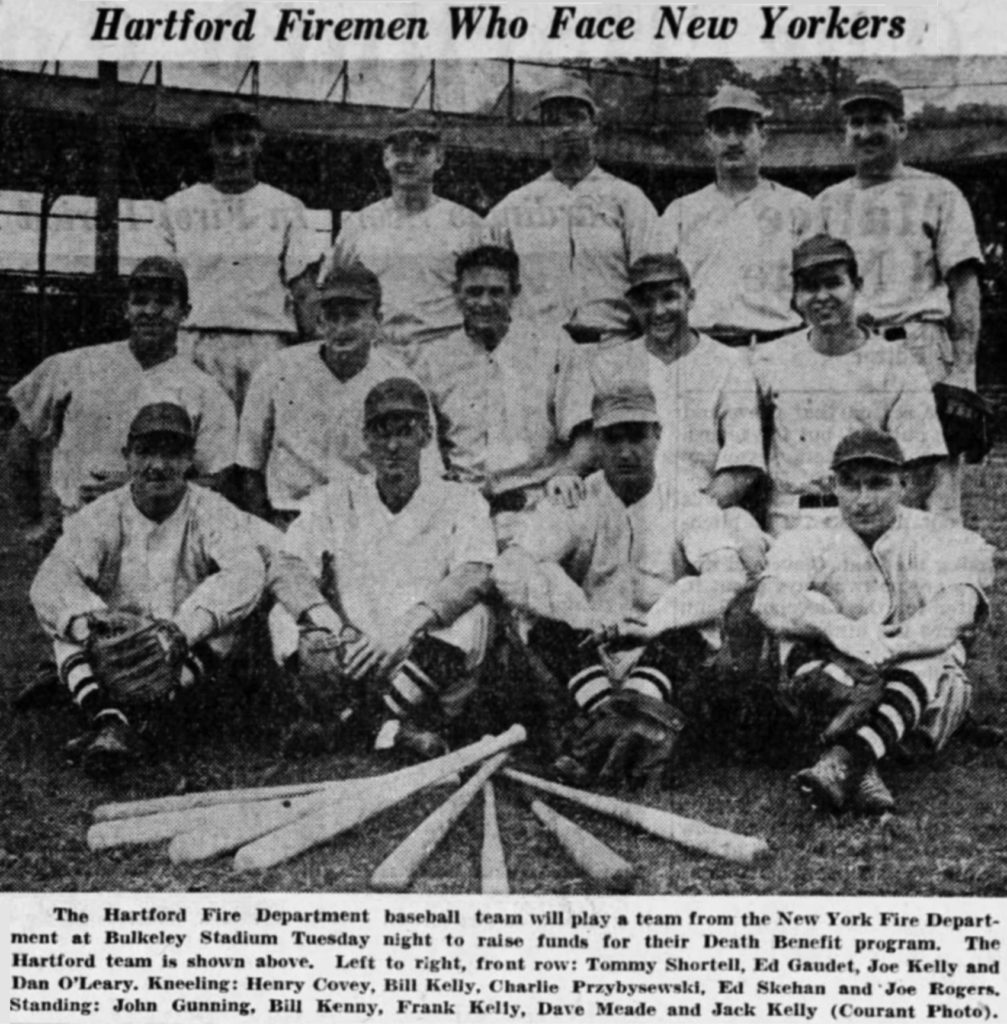
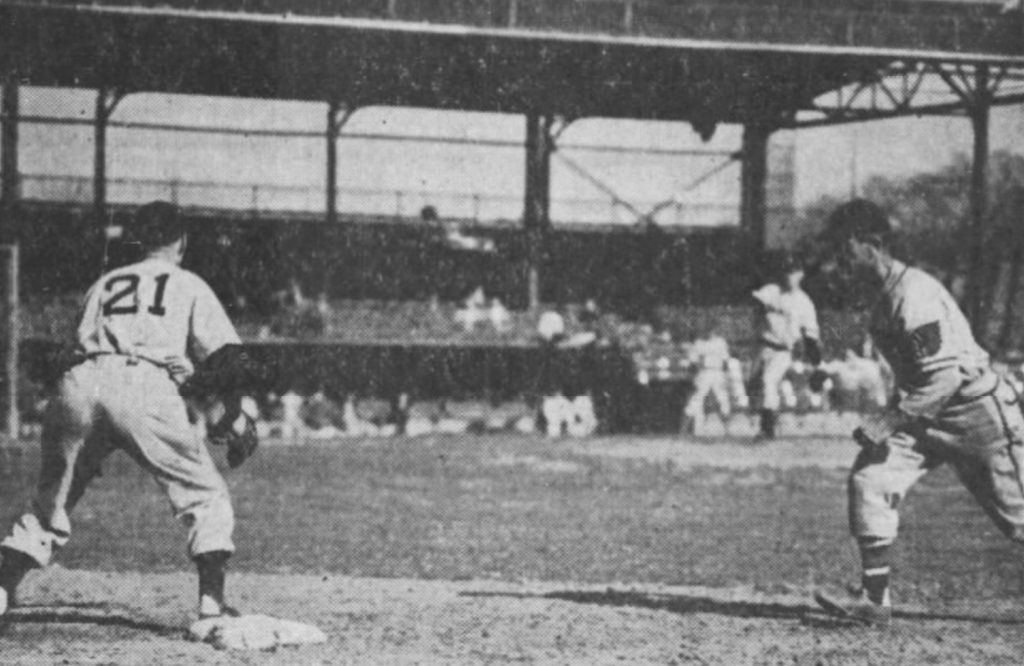


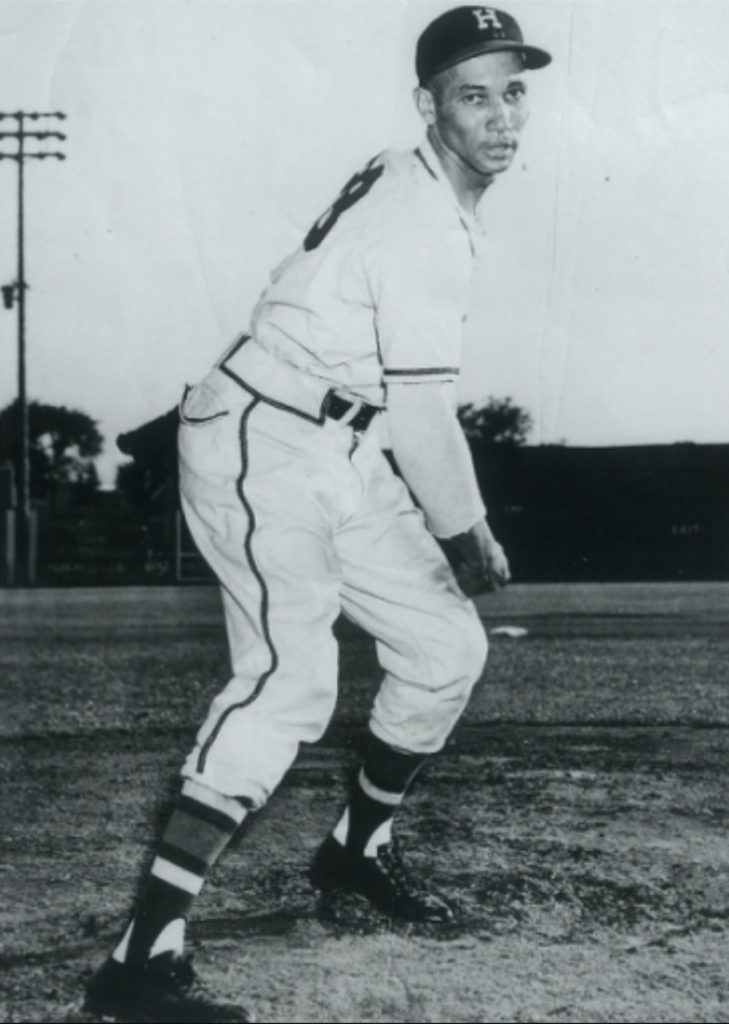

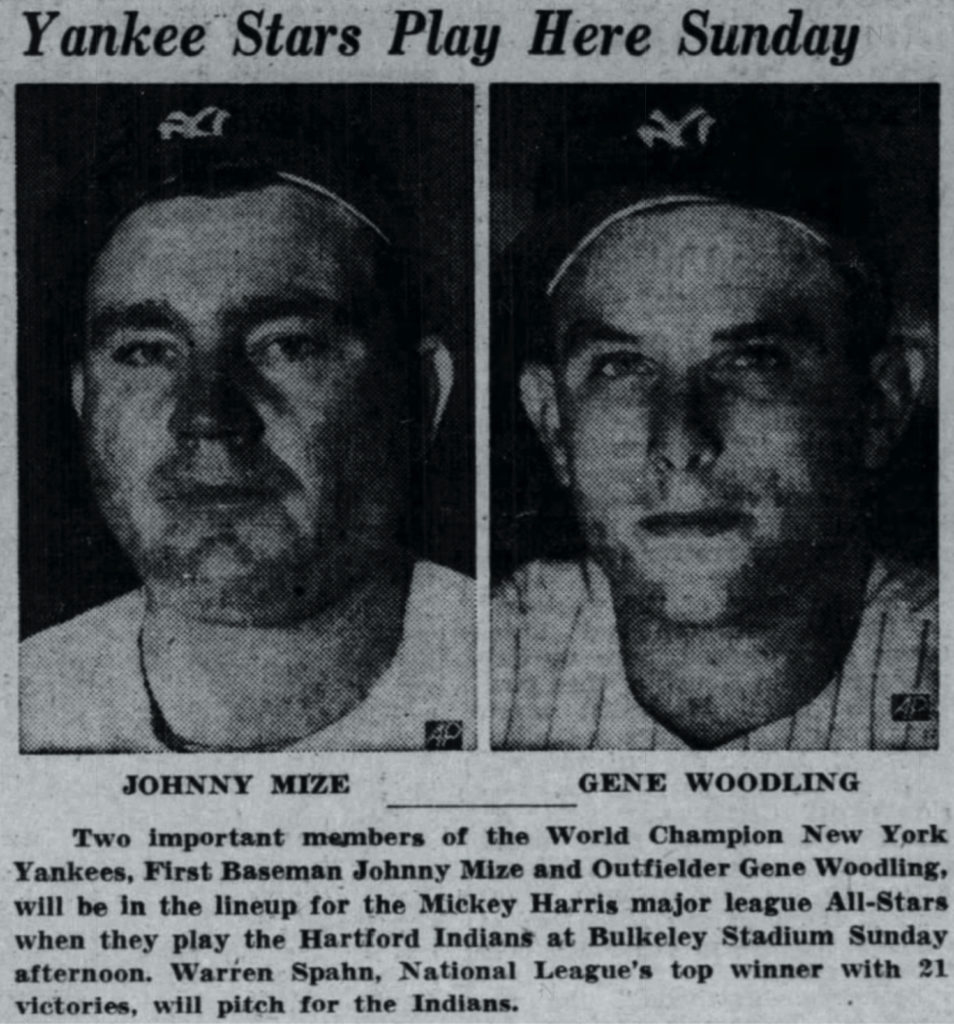
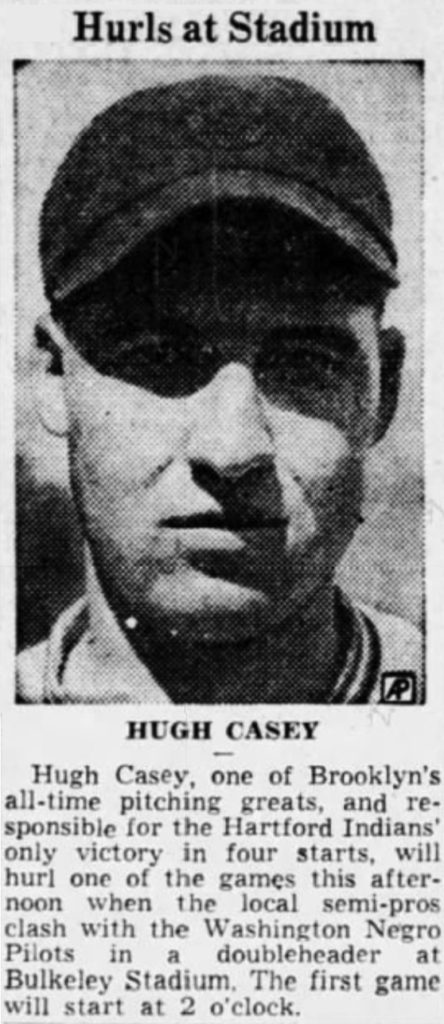



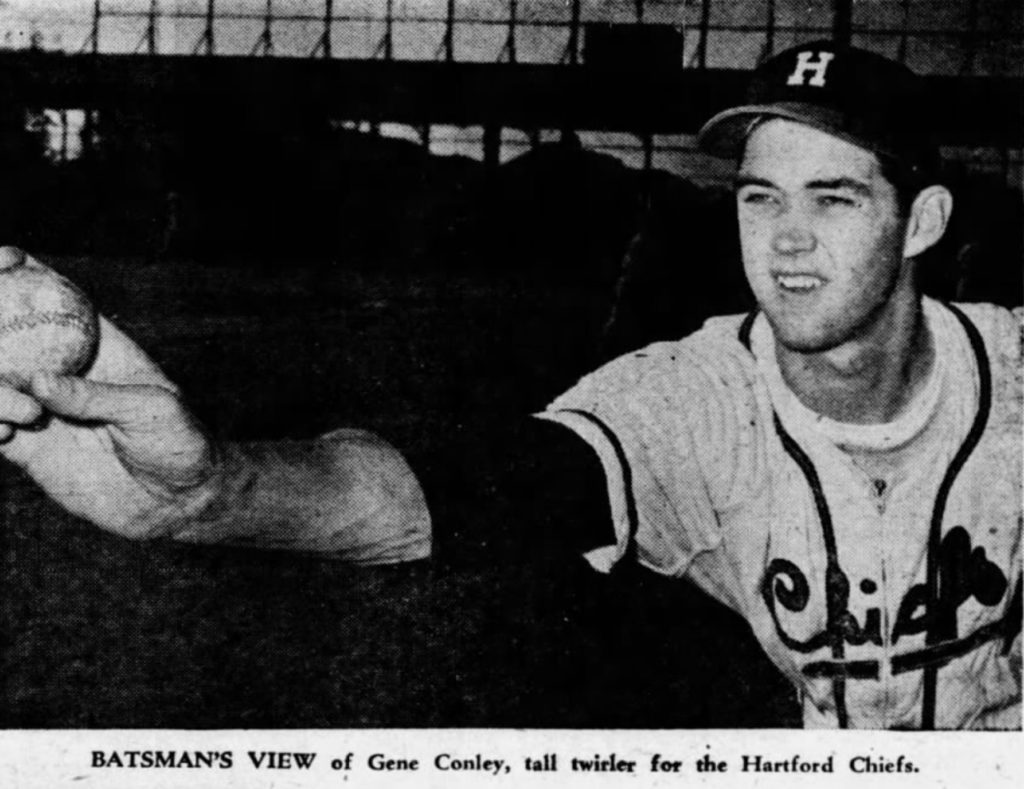
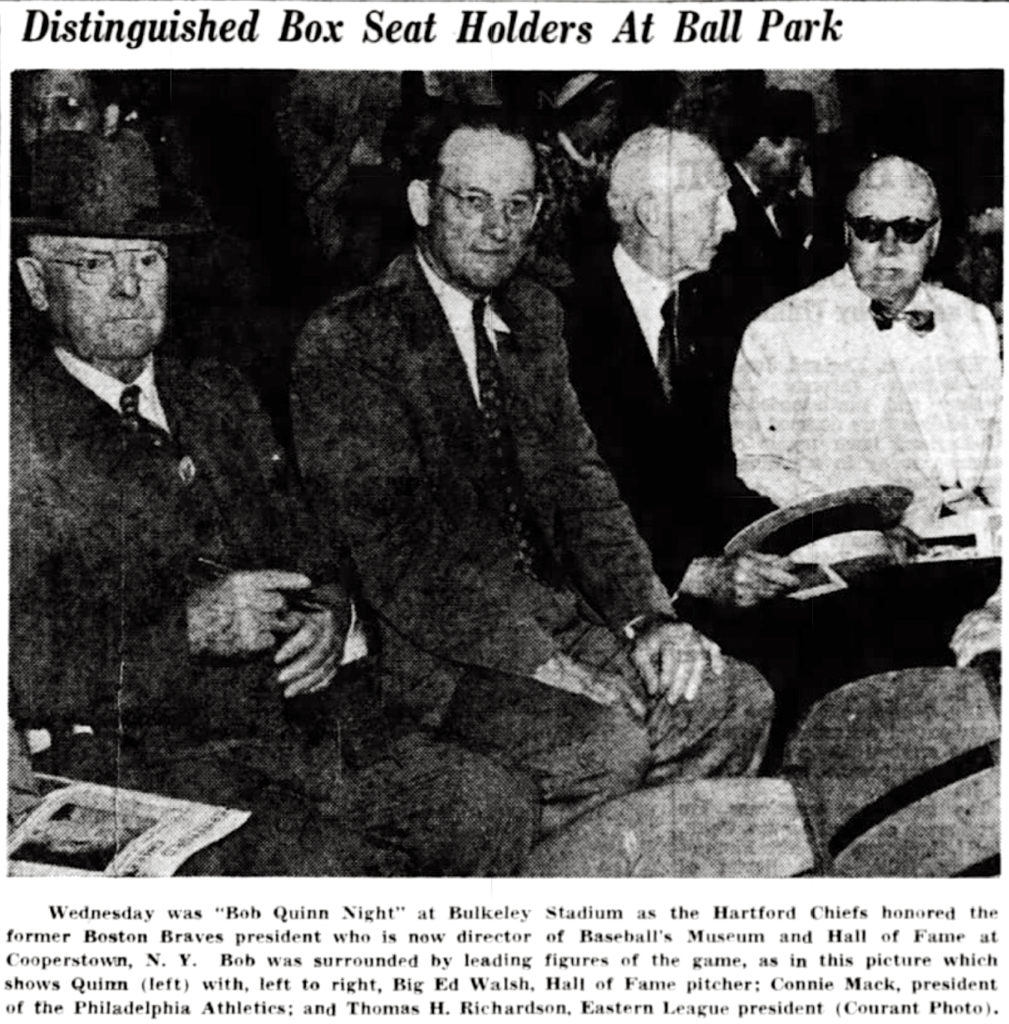
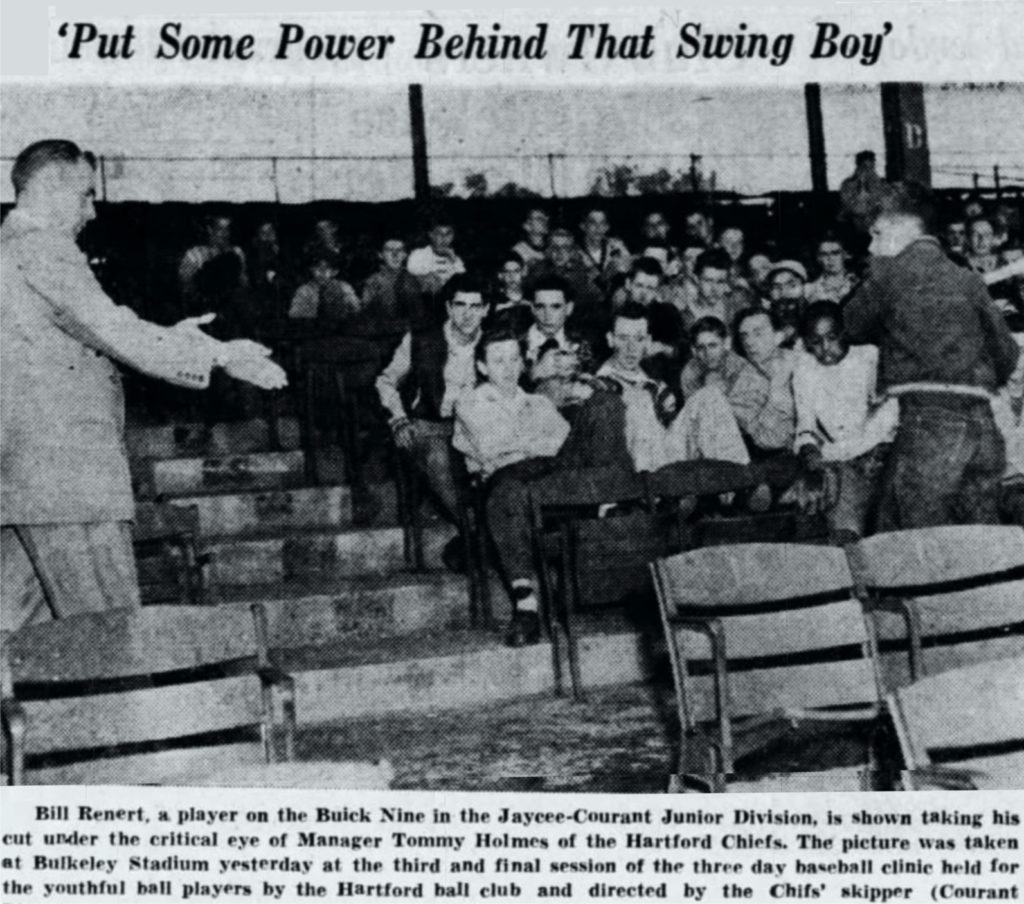

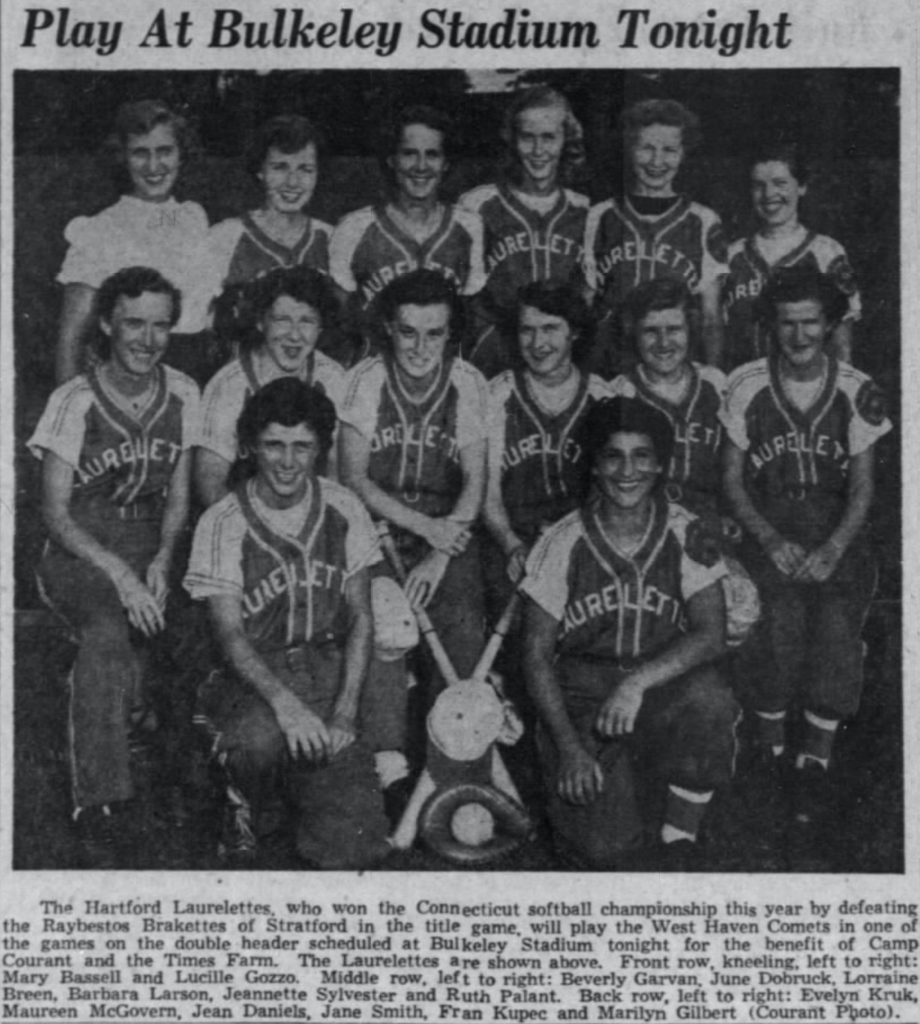
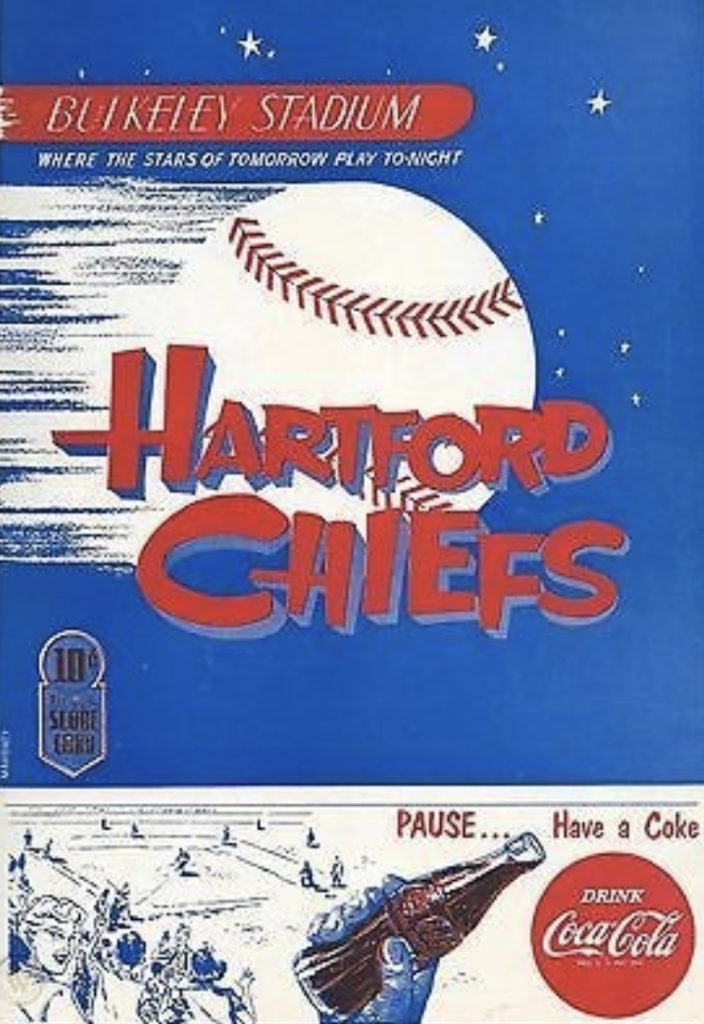
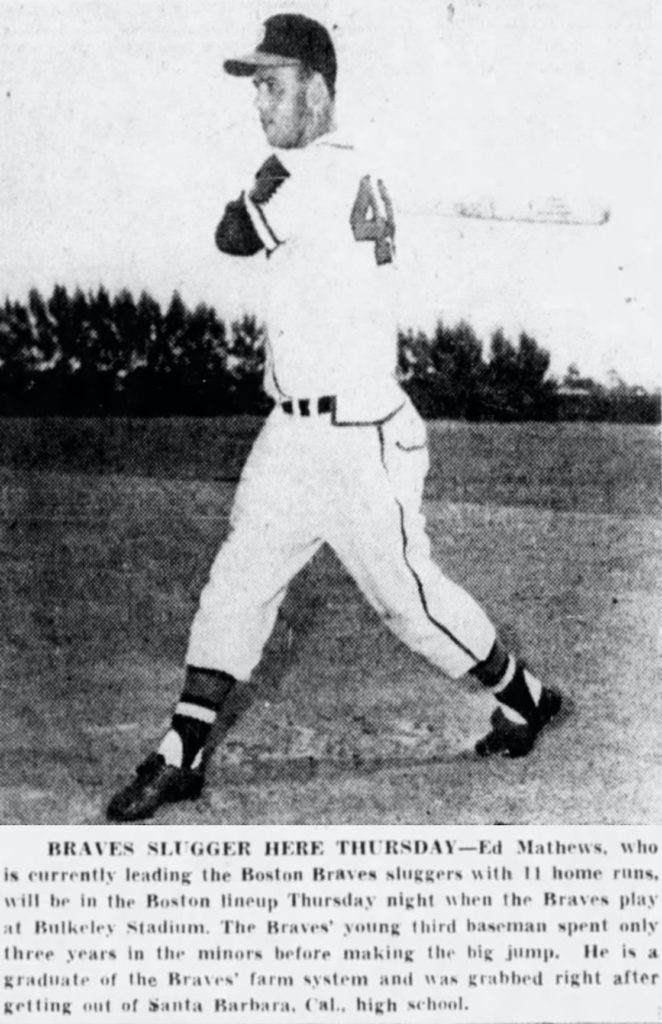


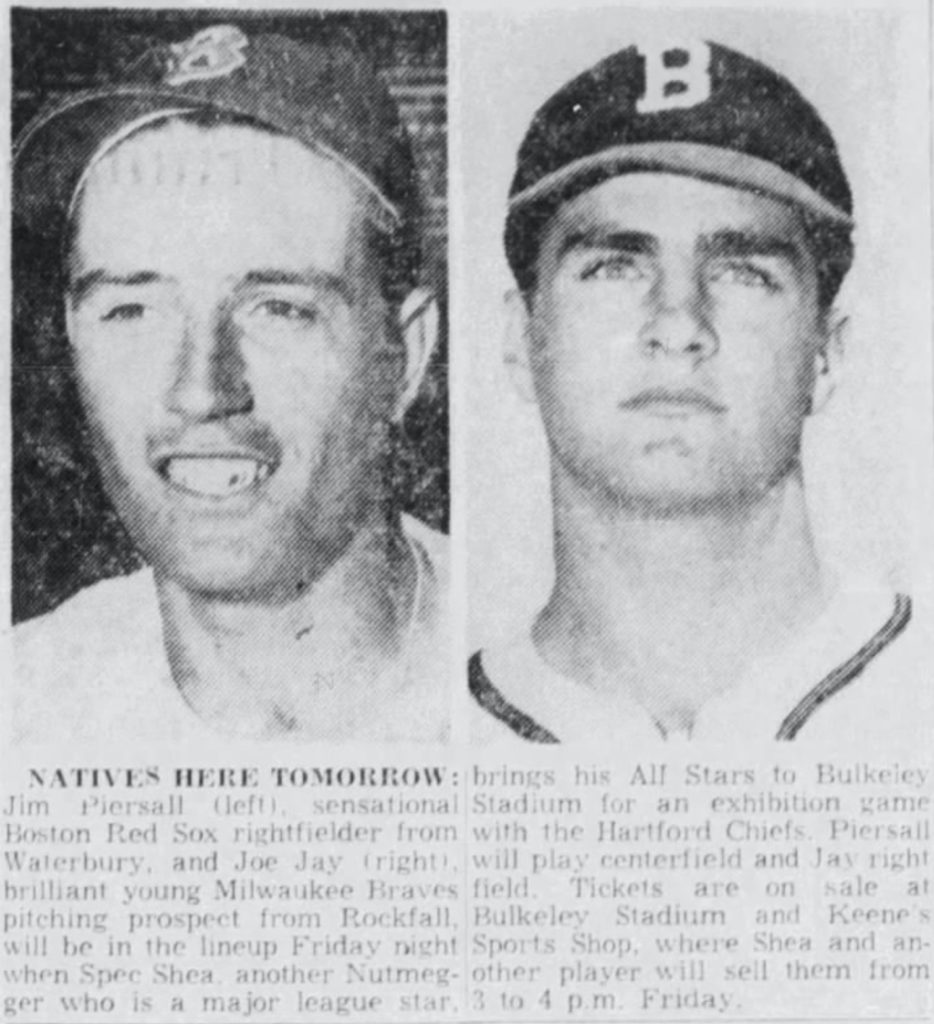
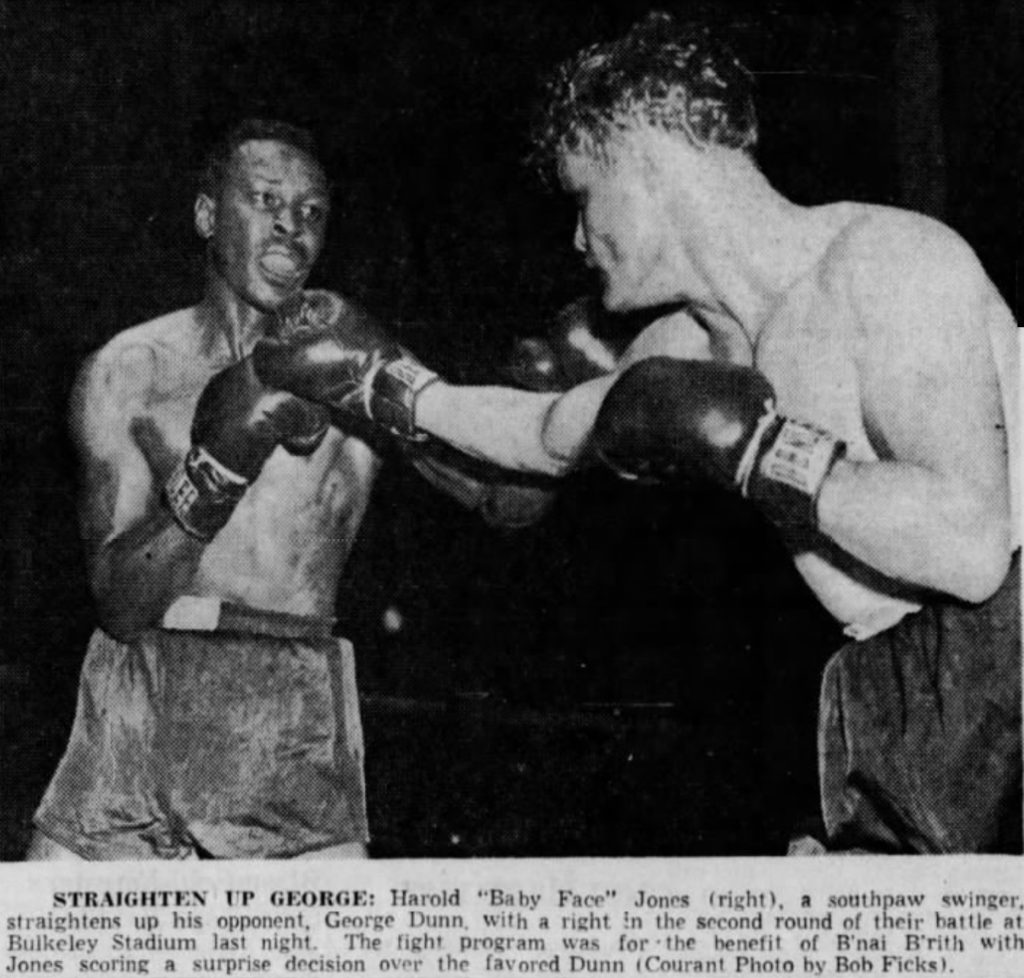
In 1955, Bulkeley Stadium was sold for the last time. The Milwaukee Braves conveyed the property for $50,000 to John E. Hays Realty of Hartford. The stadium fell into disarray and ended up being demolished. A shopping center was planned for the site but it never materialized. Instead, a nursing home called Ellis Manor was built on the premises.
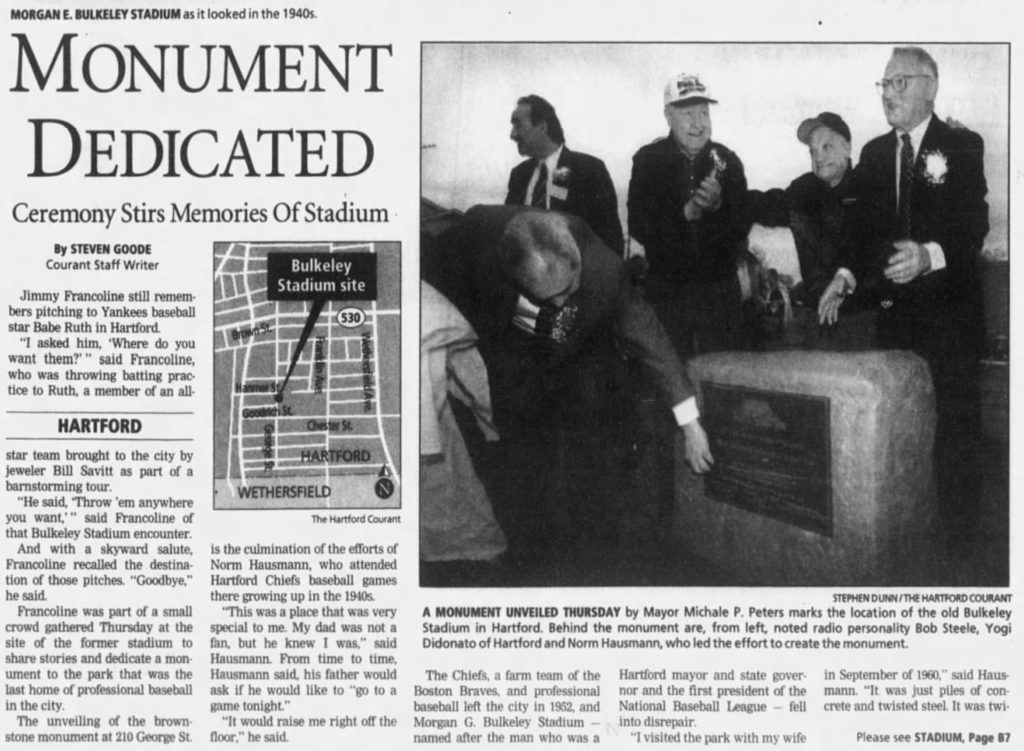
A stone monument and a stone home plate were dedicated at the former site of Bulkeley Stadium in 1998. At another commemorative ceremony in 2013, GHTBL Hall of Fame inductee James Francoline was in attendance. Francoline was a pitcher for the Hartford Senators and the Savitt Gems who threw batting practice to Babe Ruth at Bulkeley Stadium – long gone, but not forgotten.

“On the baseball field at Bulkeley Stadium, Leo Durocher played his first season of professional baseball. On the same diamond, Lou Gehrig, learned the rudiments of first base play and went directly from there to Yankee Stadium and baseball immortality. Hank Greenberg was a raw rookie who couldn’t make the grade here and had to be shipped down to Evansville. The greatest athlete of all time, Jim Thorpe, wore the Hartford uniform in one of the most bizzare periods of the city’s baseball history. Paul Richards was a Hartford catcher there and Van Lingle Mungo, a Hartford pitcher. Babe Ruth and Ted Williams played at Bulkeley Stadium when Bill Savitt was keeping the place alive. A man could go down Franklin Avenue to Bulkeley Stadium and see young ball players who were going to be the very best in the majors.”
Bill Lee, Sports Editor, Hartford Courant, July 9, 1955.
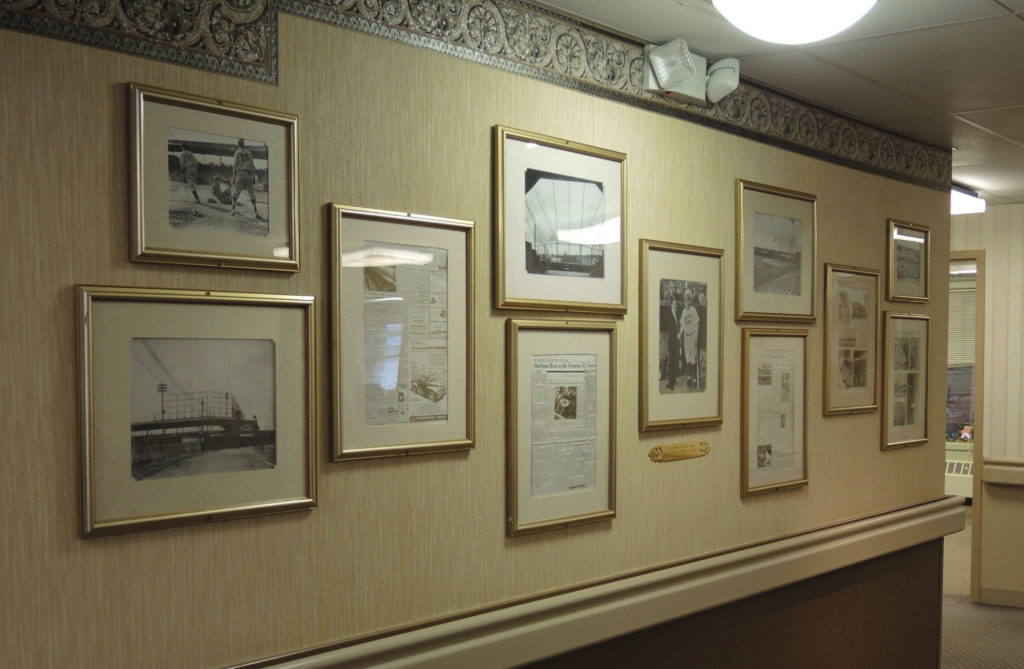
References
- The Hartford Courant database on Newspapers.com
- “Bulkeley Stadium: Hartford’s last home to pro baseball”. SABR. Retrieved 2016-01-24.

7 comments